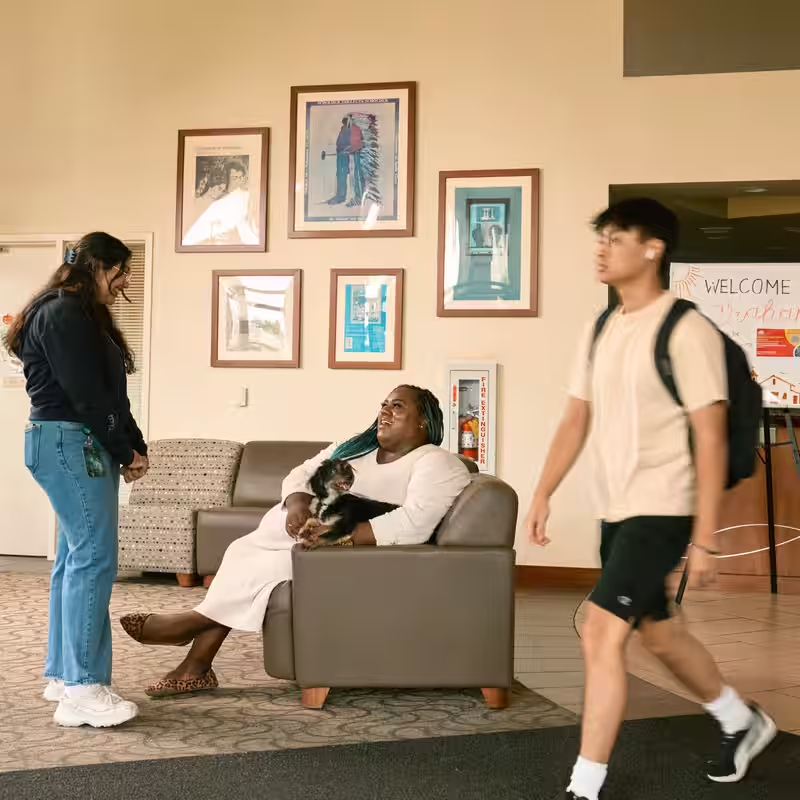Table of Contents
- What Are Embedded Therapists?
- Why Colleges Are Moving Therapy Into Dorms
- Real Stories, Real Impact
- By the Numbers: Embedded Counseling Growth
- Challenges and Boundaries
- What the Future Holds
- Sources
What Are Embedded Therapists?
Imagine walking down your dorm hallway and spotting your therapist—sitting with a friendly dog, handing out lemon bars, and ready to talk. That’s not a fantasy. It’s the new reality for thousands of college students across the U.S. thanks to embedded therapists.
Embedded therapists—also called embedded counselors—are mental health professionals who work directly within academic buildings, residence halls, or student support offices. Unlike traditional campus counseling centers, which can feel clinical or distant, these therapists meet students where they already are: in their everyday environments.
Why Colleges Are Moving Therapy Into Dorms
With 37% of college students reporting symptoms of depression and nearly half of those in need not accessing care, universities are rethinking how to deliver mental health services. Common barriers include stigma, scheduling conflicts, lack of privacy, and simply not knowing where to go.
Embedded therapists help break down those walls. By being visible, approachable, and available during non-traditional hours—even as late as 10 p.m.—they create a low-pressure entry point for students who might otherwise never seek help.
Real Stories, Real Impact
Take Xiomara Garcia, a 21-year-old bioengineering major at Santa Clara University. As a first-gen student and the only person of color in some of her classes, she struggled with imposter syndrome. After a family loss and mounting academic stress, she tried online therapy—but found herself hiding under a stairwell to attend sessions.
Everything changed when she met her embedded therapist, whose office was in her old dorm. “It felt like home,” she said—complete with cozy chairs, soft lighting, and a basket of snacks. Two years later, she’s more confident and emotionally resilient.
At Virginia Tech, embedded counselors have reduced after-hours crisis calls and eased the burden on student leaders, who previously felt overwhelmed by peers’ mental health emergencies.
By the Numbers: Embedded Counseling Growth
| Institution | Year Launched | Embedded Counselors | Students Served (Recent Year) |
|---|---|---|---|
| University of Arizona | 2020 | 12 | N/A |
| Virginia Tech | Before 2024 | 5 | 391 (2024–25) |
| Ohio State University | Ongoing expansion | 18 | N/A |
| University of Iowa | N/A | 2 | Covers 11 residence halls |
Nationwide, nearly one-third of college counseling centers now use embedded counselors—up from just 20% five years ago.
Challenges and Boundaries
Despite the benefits, the model isn’t without hurdles. Therapists working alone in dorms can feel isolated. Blurred lines between professional and campus life also make it harder to maintain boundaries.
“Counselors have to be firm about where their scope of care begins and ends,” said Melissa Bottiglio, assistant director of the Embedded Program at the University of Colorado Boulder.
What the Future Holds
As more schools adopt this approach—tailoring services to specific communities like medical students, Native American scholars, or first-year residents—the hope is that therapy becomes as routine as grabbing coffee or visiting a professor during office hours.
“This is what embedded counseling does,” said Sarah Heinzl, a counselor at the University of Arizona. “It breaks down misconceptions about therapy and normalizes counseling as part of their world.”




